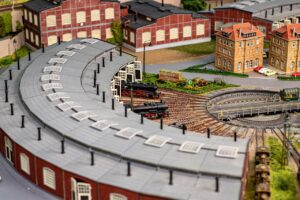The development of the subway system is closely linked to technological innovations that have brought about groundbreaking changes over the decades, from the introduction of steam locomotives to the modern subway. These technological advances not only improve the efficiency and safety of subways, but also improve the way people move through urban spaces. In this article, we take a look at the most important technological innovations in the history of the subway system.
The birth of the metro: steam-powered trains
The first subway system emerged in the 19th century with steam-powered trains. London’s Metropolitan Railway, opened in 1863, was one of the pioneers in this regard. Passengers often found the steam locomotives that pulled the trains through the tunnels noisy and smoky. Nevertheless, work began to lay the foundation for underground public transportation.
Electrification: The transition to electric propulsion
The introduction of electric propulsion was a milestone in the development of the subway system. This innovation brings many benefits, including less noise and air pollution, improved energy efficiency, and a smoother ride. The first electrified Underground line was the City and South London Railway in London, which opened in 1890. This marked the beginning of a new era of subway travel.
Automation and signaling systems
As technology has advanced, the introduction of automated signaling systems has made subway operations safer and more efficient. These systems regulate the spacing between trains and allow for precise control of traffic. Automation not only increases subway capacity, but also improves passenger safety.
Comfort and air conditioning
The introduction of air conditioning in subway cars has significantly improved passenger comfort, especially in cities with extreme climatic conditions. Modern subway systems are equipped with comfortable seats, good ventilation and air conditioning to provide passengers with a comfortable ride.
State-of-the-art train control systems
The train control system of the modern subway is a technical marvel. They enable precise acceleration, braking and stopping of trains for a smooth and efficient ride. Some systems can even optimize energy consumption by recovering braking energy and reusing it for propulsion.
Real-time passenger information system
Modern subway systems are equipped with real-time passenger information systems that provide passengers with accurate information on departure times, delays and detours. These systems greatly improve the passenger travel experience by helping passengers make informed decisions and avoid unpleasant surprises.
Electrification and sustainability
An important trend in the development of metro systems is the shift to environmentally friendly and sustainable technologies. Many cities are investing in the electrification of their subway networks to reduce CO2 emissions and minimize their impact on the environment. In addition, some cities are exploring the incorporation of renewable energy into subway operations to reduce reliance on non-renewable resources.
Future prospects
Technological innovation in the subway system shows no signs of slowing down. Future developments could include autonomous subways, improved energy storage systems, even smarter signaling systems, and seamless integration with the overall public transportation network. These advances will help further improve the efficiency, safety, and sustainability of the subway system.
Summary
The history of the subway system is one of technological innovations that revolutionized public transportation. From the first steam-powered trains to the state-of-the-art electrification and automation systems of today, these technological advances have helped transform urban transportation and improve the lives of people in cities around the world. As one of the most advanced forms of public transportation, the continued evolution of the subway system heralds an exciting future.



